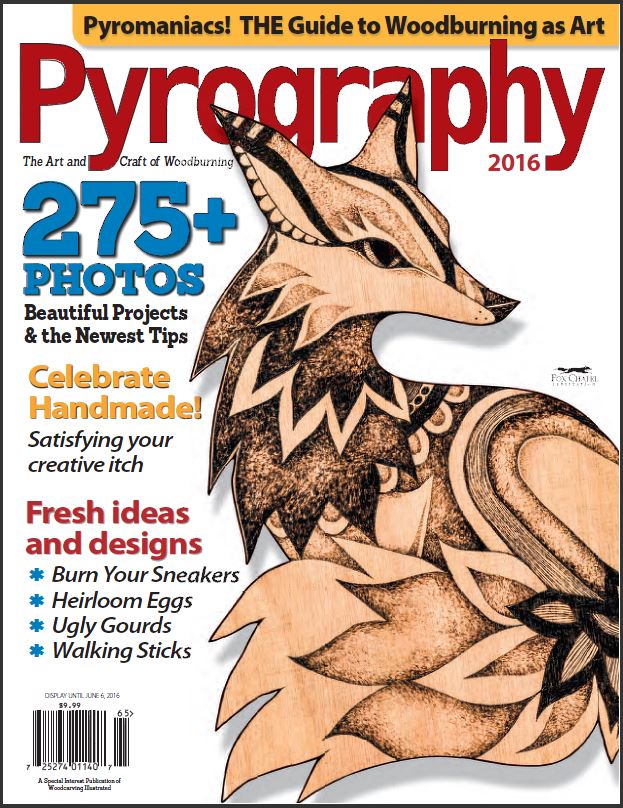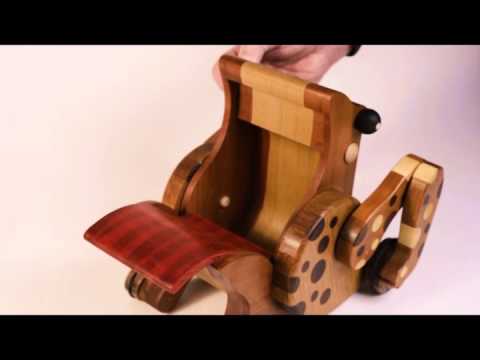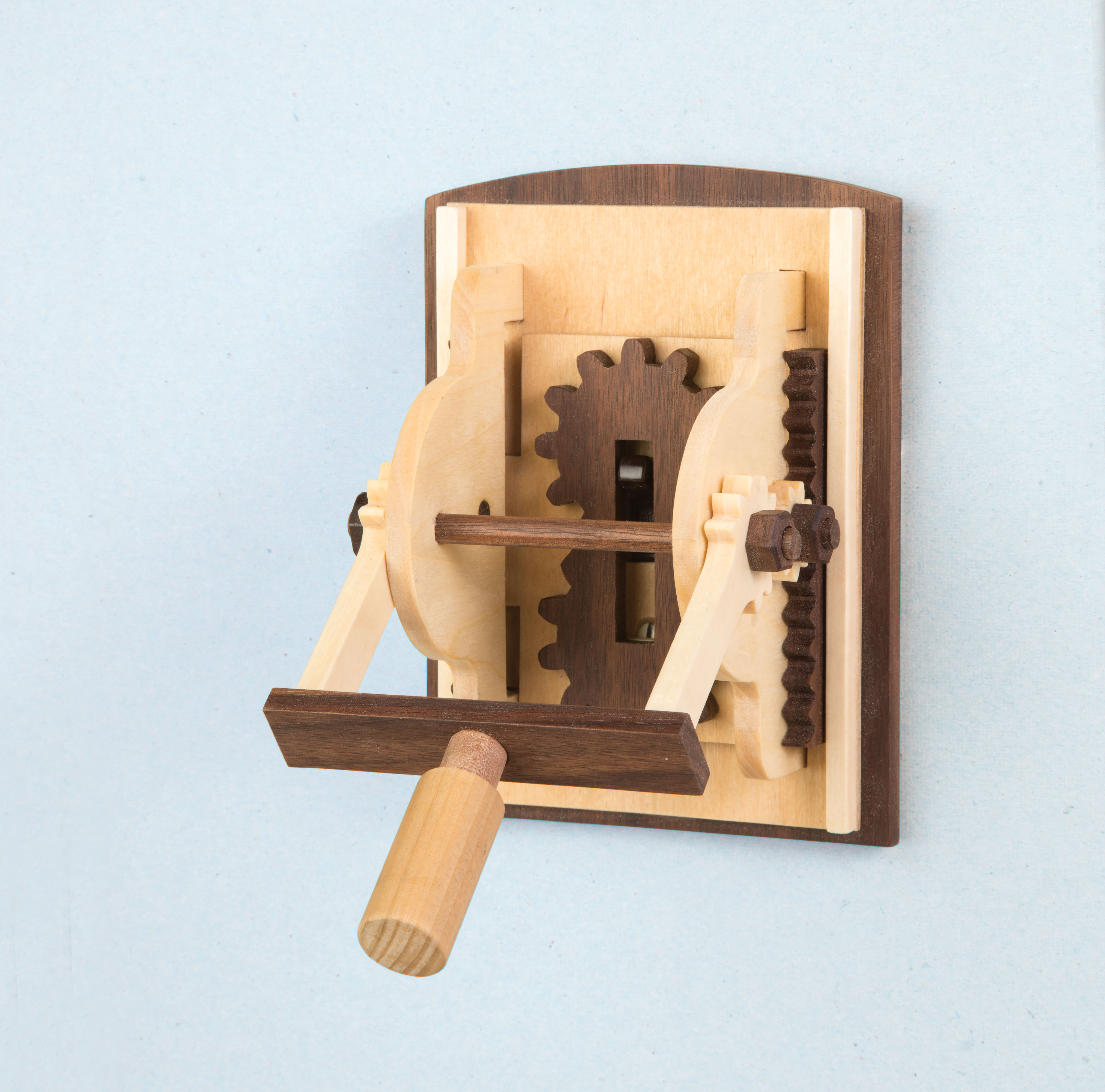 by Jo Schwartz
by Jo Schwartz
Transform an ugly pine plate into a pretty piece of pyrography
Pine is great for many craft projects, but it is not ideal for pyrography. Its grain alternates between being very hard and very soft, and becomes sappy in spots when subjected to heat. However, you might have a pine blank lying around that you purchased before you learned better, or maybe a friend or family member, knowing you’re “doing that burning thing,” gave one to you. Go dig it out of your stash—I’ll show you how to work with the grain to create interesting and attractive patterns.
If you wonder, the name “Frog eye” came from two sources: the tape I used to section the plate and the half-circles in the design, which look like frogs’ eyes to me.
Burning the Plate
1 – Randomly divide the plate into sections. I place three long strips of tape across the plate and then tear off shorter strips to divide the spaces into odd-sized shapes.
2 – Trace the tape. Use a graphite pencil. When you’re done, remove the tape.
3 – Draw the “frog eyes” (half circles). Using the graphite pencil and draw inside the tape lines, not inside the spaces between. Try to make the half-circles close to the same size. The half-circle design may or may not end at the corners; go ahead and make the circle loop around the corner and continue on!
4 – Burn the lines and the frog eyes. Use an angled cutter or skew tip on medium-high heat to burn the straight lines, and switch to a writing tip to draw the circles and place a dot in each. Try to keep an even, gentle pressure. Erase all pencil lines.
5 – Pick a shape and shade the edges. Using medium-high heat, and the angled cutter or skew, smoothly shade from the outside edge toward the center.
6 Fill in the center of the shape. You will notice how the different areas of the pine grain burn. When you burn across the grain, the tip plops into the softer areas, creating light and dark “rows.” Instant texture/pattern with very little effort! If you burn with the grain, the tip will slide across the hard grain without burning much on the softer area.
7 – Fill in the rest of the spaces. Either draw freehand or use a small ruler to draw concentric lines inside a few of the shapes. Shade between some of the lines. The changing grain will create interesting patterns. Or, trace the grain lines to make straight lines. Most of the time, the pen will follow beside the grain line. If the tip slides to one side, don’t panic. In this type of project, it’s not a mistake; it’s a “design element”!
TIP: Shading
I always begin shading on the left side and slide the point to the right. (Left-handed people may choose the opposite way.) On the straight lines in this piece, I begin at the top-left edge and burn all the way around. Then, I turn the wood so that I can begin again at the top-left edge and join that shading to the completed edge. This is easy and helps create a dimensional effect in the shaded spaces.
Materials
- Pine plate: 14” diameter
- Painter’s tape, such as FrogTape: 1-1/2” wide
- Basic pyro kit (see the spring 2016 special issue of Pyrography for more information)
Tools
- Woodburner, such as Walnut Hollow with points: writing, angled cutter
For more pyrography inspiration, check out the Spring 2016 Pyrography special issue.
.

















